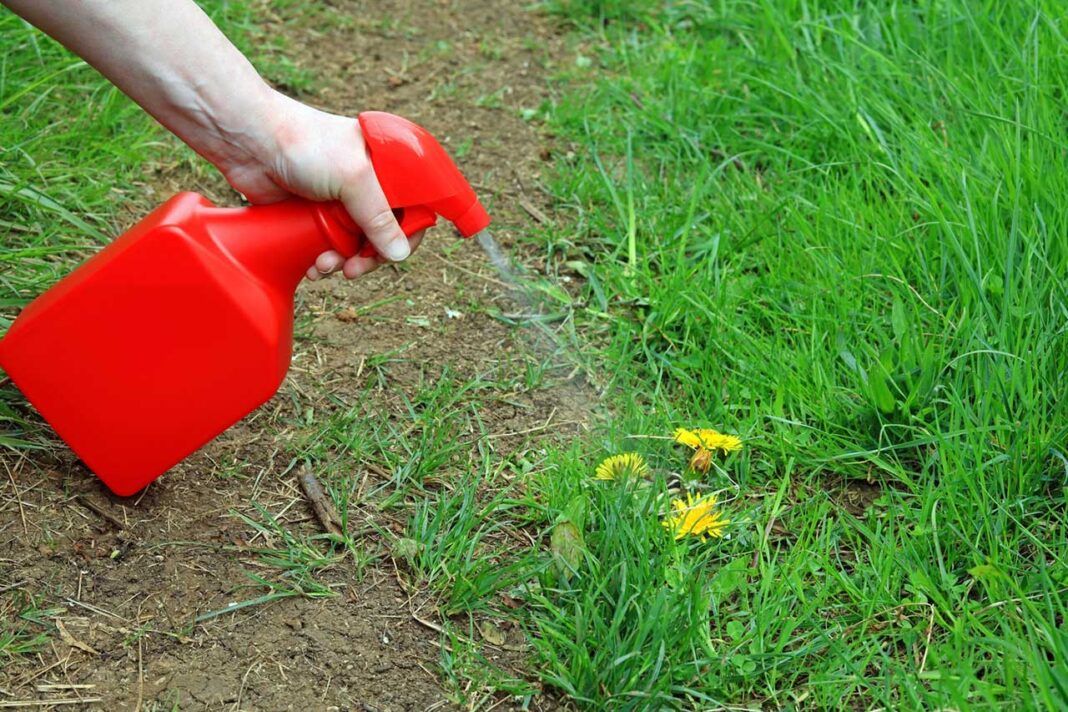Growing and maintaining lawn grass is often challenging. It involves many steps, like soil preparation, seeding, mowing, aerating, weeding, and fertilizing. While all of these are important, weeding is one task that requires careful attention. It involves removing the wild grass that affects the lawn’s beauty. Lawn owners often worry about the lawn getting damaged while removing the weeds. Fortunately, the market has some weed killers that won’t kill grass.
Types of weed killers
Before heading to the store, it’s important to understand the types of weed killers. Essentially, weed killers are herbicides used to kill weeds permanently. They come in liquid, granular, or powdered forms and can be classified into different categories.
Pre-emergent and post-emergent
Pre-emergent weed killers target and kill germinating seedlings. They need to be applied two to three weeks before weeds appear. Post-emergent ones target weeds that are already growing. They can be applied at any time during the growth cycle.
Selective and non-selective
Selective weed killers target only weeds without damaging the other plants nearby. On the other hand, a non-selective weed killer damages everything it is applied to.
Persistent and non-persistent
The persistent variety prevents weeds from returning, thanks to its long-lasting effects. Non-persistent weed killers are effective for a short time only.
Each type of herbicide can be used at specific stages of lawn care. For instance, non-selective herbicides can be used before planting the grass. But once the lawn has grown, selective herbicides are the best bet as they kill the weeds and do not affect the lawn grass.
Tips for choosing a selective weed killer
Selective herbicides work best as they have active ingredients that target weeds without damaging the lawn grass or nearby plants. That said, it is important to research well and use the right tips when buying such a weed killer.
Identify the type of weed
Knowing which types of weeds are growing in the lawn is important. Weeds like dandelion, clover, crabgrass, quackgrass, and nutsedge are common and can be identified easily. One should also know the name of the grass growing on the lawn. Once the names are noted down, one can visit the store, shortlist a few herbicides, and read their labels. The label should mention the type of grass the product is best suited for and the weed it can target. While the chemical or herbicide may kill the weed, it should not harm the grass.
Contact a lawn expert
If one cannot identify the type of weed growing, they can contact an expert for an inspection and advice. Alternatively, one can upload a picture online and use image search or smartphone apps to identify unusual weeds.
Compare multiple options
While at the store, it is important to compare multiple products. All packages will have information about the ingredients, uses, prices, and other details, which one must read to make an informed decision. Haste can cause one to pick up the wrong product, which can damage their lawn and lead to unnecessary hassle.
In addition to buying the best weed killer, one must also apply it correctly. The best time to use selective herbicide is in spring and fall. One can apply the right amount based on the lawn’s area and the magnitude of the weed problem. Wearing protective gear and following instructions are important while performing the task.
Natural ways to tackle weeds without damaging grass
Commercial herbicides are not the only solution to getting rid of weeds. One can also use natural methods to kill weeds without hurting the grass.
Dig up weeds
When one notices a weed growing, they can pull it out along with the root system. Doing so will prevent the roots and seeds from spreading to adjacent places.
Fertilize the lawn well
A thick, dense lawn helps hide unwanted weeds. One can create a dense lawn by fertilizing the grass well and providing it with the right nutrition.
Reseed
Bald brown patches sometimes appear after removing weeds manually or using a selective herbicide. If this happens, one can reseed the patches. Bald patches are ideal spots for lawn weeds to germinate and take root.
Mow regularly
Regular mowing is a useful technique to control weeds without damaging the lawn. When mowing the grass, one must turn off the mulch setting, collect the bits into a grass catcher bag, and dispose of them safely. Mulching can spread the grass to all parts of the lawn, meaning the roots and seeds of the weed can settle and start growing again.
Some weeds are pretty and have beautiful flowers. But when they appear in hordes on a lawn, they prevent the grass from growing well, leading to frustration. The weeds utilize the water, sun, and fertilizer meant for the lawn and sometimes are stronger than the grass itself. They may grow in specific parts of the lawn or spread all over. Regardless, using the right weed killer and maintaining the lawn well can help solve the problem.
